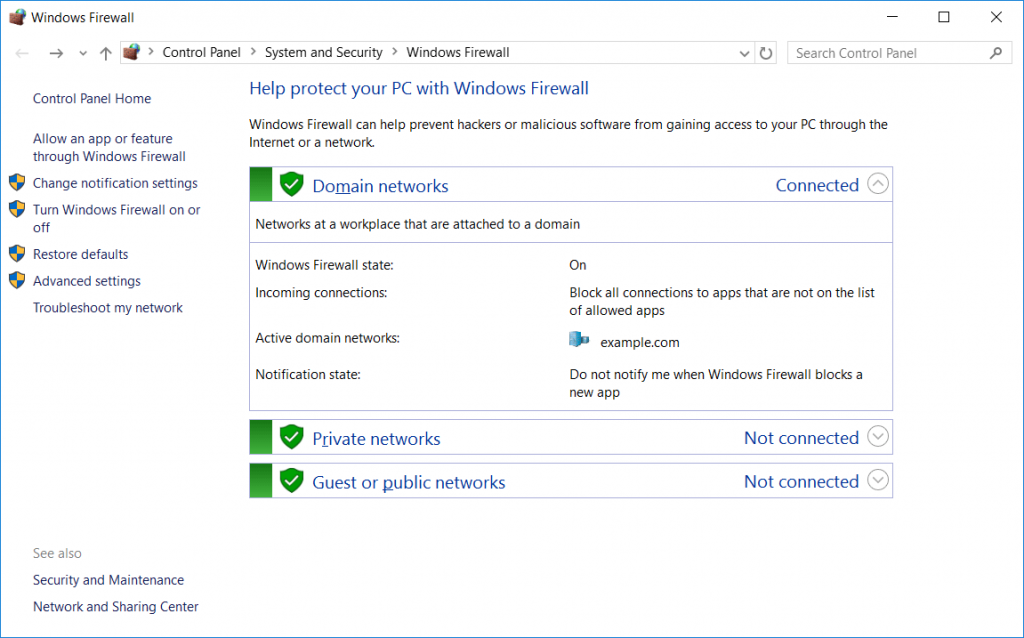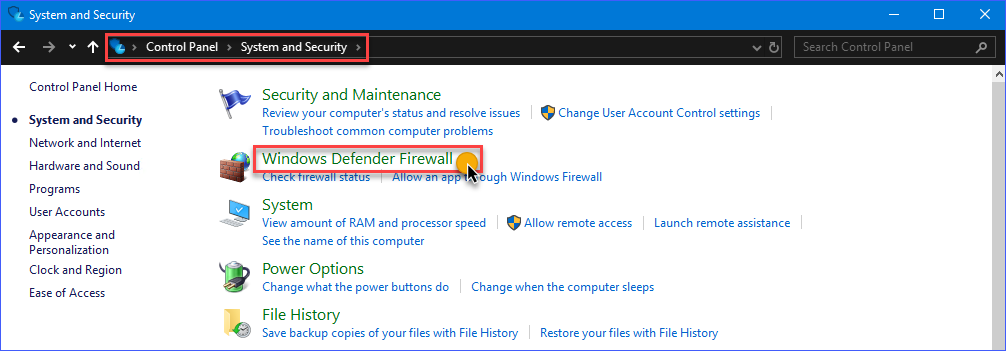

- Windows firewall control no panel full#
- Windows firewall control no panel windows 7#
- Windows firewall control no panel windows#
Import and export the policy of the program.Choose if you want the program to start at user logon.
Windows firewall control no panel windows#

Shell integration into the right click context menu of the executable files.Allow or block a program to connect to the internet with just one mouse click.Intuitive and easy accessible interface in the system tray.
Windows firewall control no panel full#
Full support for executing tasks from standard user accounts.All features are packed in the same file. Avoid using this setting unless you have another firewall running on your computer. You can block the programs you do not want to initiate outgoing connections. Outgoing connections that do not match a rule are allowed. Only programs you allow can initiate outgoing connections. Outgoing connections that do not match a rule are blocked. This setting blocks all attempts to connect to and from your computer. Windows Firewall Control offers four filtering modes which can be switched with just a mouse click:Īll outgoing connections are blocked.
Windows firewall control no panel windows 7#
This is the best tool to manage the native firewall from Windows 8, Windows 7 and Windows Vista. If your organization has applied any policies to configure the firewall those will be reapplied.It runs in the system tray and allows user to control the native firewall easily without having to waste time by navigating to the specific part of the firewall. Restore firewalls to default - If someone, or something, has made changes to your Windows Firewall settings that is causing things not to work properly you're just two clicks away from resetting the settings back to the way they were when you first got the computer. Most users won't want to dig into it that deeply adding, changing, or deleting rules incorrectly can cause your system to be more vulnerable or can cause some apps not to work. Network and Internet troubleshooter - If you're having general network connectivity issues you can use this troubleshooter to try and automatically diagnose and fix them.įirewall notification settings - Want more notifications when your firewall blocks something? Fewer? Here's where you can configure that.Īdvanced settings - If you're knowledgeable about firewall settings this will open the classic Windows Defender Firewall tool which lets you create inbound or outbound rules, connection security rules, and see monitoring logs for the firewall. Learn more about that process (and why you might not want to) at Risks of allowing apps through Microsoft Defender Firewall. Also on the Firewall & network protection page:Īllow an app through firewall - If the firewall is blocking an app you really need, you can add an exception for that app, or open a specific port. Turning this on increases your security, but may cause some apps to stop working. Checking this box tells the Microsoft Defender Firewall to ignore the allowed apps list and block everything. Under the Incoming connections section you'll find a single checkbox for Blocks all incoming connections, including those in the list of allowed apps. We recommend leaving it on unless you absolutely need to turn it off. Important: Turning the firewall off may increase the risk to your device or data. You'll also find a simple slider for turning the firewall on, or off, for that type of network. Usually your computer will only be connected to one network at a time. Here Windows Security will tell you which, if any, networks of that type you're currently connected to. When you select one of the three network types you'll get the settings page for it. Most of the other devices connected to it belong to strangers and you'd probably prefer they not be able to see, connect to, or "discover" your device. The Wi-Fi at your local coffee shop, however, is a public network. We call that "discoverable" because all the devices on that network are allowed to "discover" each other. So you might be fine with those other devices being able to see yours. Your home network might be an example of a private network - in theory the only devices on that network are your devices, and devices owned by your family. The key difference is whether other devices on the same network are allowed to see, and maybe connect to, your device. You can specify that a particular network your device connects to is "private" or "public".


 0 kommentar(er)
0 kommentar(er)
